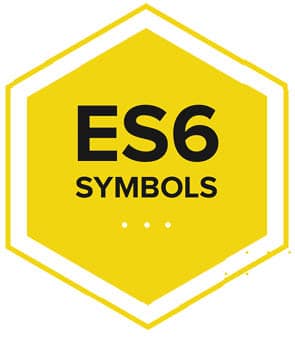
Heres another article, the ninth in the series on JavaScript. It is about ES6 features that make programs readable and maintainable. Readers joining us now would do well to look up the previous eight parts if they wish to, to get a good grounding in ES6.
In this article, we look at features such as iterables, iterators and Symbols. We will also bring together different ES6 features in one example. The article builds on previously covered features such as collections and for..of loop.
Iterables and iterators are protocols. These are available to process elements in a collection, one at a time. If you have a Java or a Python background, you probably are already familiar with these. A protocol is synonymous with an interface in Java. An object obeys the protocol, when it implements specific functions. To make an object iterable, it must implement the Symbol.iterator method. For an iterator object, it must implement method next(). To use built-in collections like arrays, you do not need to understand iterables and iterators. But, for creating custom iterators and iterables for the objects you have created, you must know about them. By doing that, you make the object walkthrough in the new looping structure for..of. Till ES6, a programmer had to implement an iterator on a collection in a cumbersome way. A good iterator design pattern hides the implementation from the algorithm.
An iterable makes an object loop through the for..of control structure. An iterator object knows the logic of how to walk through the collection and remembers the current position.
Iterables
You are already familiar with iterables. Strings and arrays are built-in language iterables. Iterable objects are collections that implement the method [Symbol.iterator]. This method makes the collection iterable in the for..of loop. This new looping mechanism is specifically for collections. ES6 introduced collections like Maps, Sets, WeakMaps and WeakSets, which are all iterables that can be used with the for..of loop.
It is important to understand iterables, as many new constructs and methods expect iterables. For example, in the last issue, we learnt about Promises. The promise.all() method takes an iterable object as a parameter. Similarly, the spread operator can be used on objects that are iterable.
An example of an built-in iterable array is shown below:
let arr = [one, two, three];
for (let a of arr) {
console.log(a);
}
Example 1: The for..of loop for an array
Symbol
Till ES6, there were only six types. Every value in JavaScript was of one of the types – undefined, null, Boolean, Number, String and Object. A new type called Symbol has been added to the JavaScript language. A Symbol is a unique value. It is used to create an object property.
There is a good reason why a Symbol is used for iterables. Due to a lack of proper iteration convenience in JavaScript prior to the arrival of ES6, programmers implemented iterators with custom methods. The purpose of uniqueness in object property, using Symbol, is to avoid any clash with existing methods.
In the browser console, you can check the following code:
> typeof Symbol() Symbol
A new looping structure
It is important to understand the difference between for..in and for..of. Note that for..in takes an object and iterates through the keys of the object. Whereas, for..of takes an iterable object. In real world examples, DOM navigation methods are going to be iterable objects that return NodeList.
for (variable in object) {
//statement
}
for (variable of iterable) {
//statement
}
An iterable is easily mistaken for an array. For example, a string in JavaScript is an iterable and hence can be used with a for..of loop.
let str = hello;
for (const s of str) {
console.log(s);
}
Looping over an ES6 new data structure set is shown below:
let set1 = new Set([11, 22, 33, 11, 33]);
for (const s of set1) {
console.log(s);
}
Iterator
An iterator object is one that implements the next() method. The next() method returns an object {value: Any, done: Boolean}. It fetches values from the collection, one at a time. When it reaches the end, the value of the done property is true. When this is the case, the value property is undefined. The method next() is a zero arguments function. Let us look at an example, which is shown below:
let iterable = [a, b, c];
let iterator = iterable[Symbol.iterator]();
iterator.next(); // {value: a, done: false}
iterator.next(); // {value: b, done: false}
iterator.next(); // {value: c, done: false}
iterator.next(); // {value: undefined, done: true}
Example 2: An iterable defined and traversed
After understanding the definitions of iterable and iterator, let us look at a program that makes the concept clear. The following program generates Fibonacci numbers under 50. Fib is an iterable object and also an iterator. It implements [Symbol.iterator] and the next() function.
let fib = {
[Symbol.iterator]: function() {
let pre = 0, cur = 1, value;
return {
next: function() {
value = pre;
pre = cur;
cur = pre + cur;
return {done: false, value: value};
}
}
}
}
for (var n of fib) {
// truncate the sequence at 50
if (n > 50)
break;
console.log(n);
}
Example 3: Fibonacci iterable object
The above example can be rewritten using other ES6 features, as shown below:
let fib = {
[Symbol.iterator]() {
let pre = 0, cur = 1, value;
return {
next() {
[value, pre, cur] = [pre, cur, pre + cur];
return {value};
}
}
}
}
for (let n of fib) {
// truncate the sequence at 50
if (n > 50)
break;
console.log(n);
}
Example 4: Fibonacci iterable object (the ES6 way)
Note the removal of the function keyword in Lines 2 and 5.
In Line 6, we used the destructuring feature to assign multiple values at a time.
In Line 7, we used the shorthand property notation. Since the property and the local variable name are the same, we just use value.
The above example is available online at http://www.es6fiddle.net/in4vk7nq/. Take a look at it.
Another point to note in the above example is that the Fibonacci object generates an infinite sequence. The control to define the end of sequence generation is outside the function. In cases of built-in iterators like arrays, the array length defines the end of the collection.
In JavaScript, we can list Symbols associated with an object as shown below:
> Object.getOwnPropertySymbols(fib)
ES6 support in browser environments
Whats amazing is that in the last eight months, the support for ES6 features has steadily increased. The top three browsers, Chrome, Firefox and Microsoft Edge, now have 90 per cent or more support. Google Chrome is leading with 97 per cent in version 52.
Next month, we will learn about an interesting new feature called generators, also called co-routines. Generators break the flow of control and resume from the same place. Internally, the language also remembers the context of execution. This feature, when used in conjunction with iterators, is very powerful.















































































